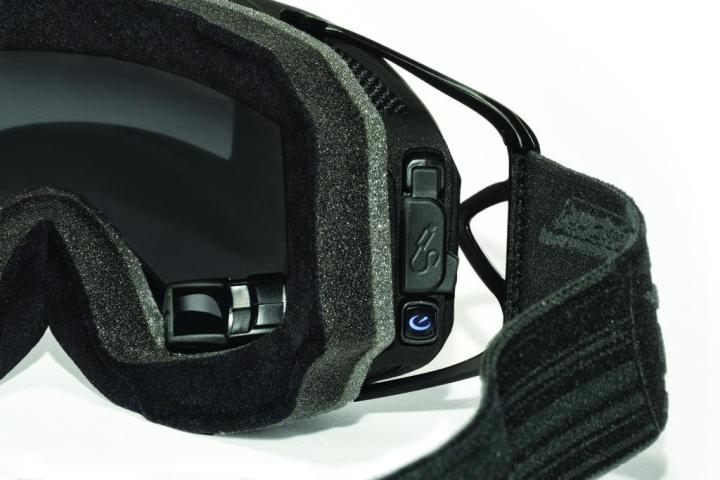
Just in time for ski/snowboard season, Recon Instruments has just unveiled its newest set of heads-up display goggles: the Recon Snow2.
Despite the numerical suggestions of it’s name, Snow2 is actually Recon’s 4th generation of HUD. It’s an idea that started around 2010, and has been getting progressively better with each passing year, so before we get into what’s new in this latest model, here’s a quick recap of the previous three generations.
The first iteration -called Transcend- was created through a partnership with Zeal Optics. It was the first HUD of it’s kind, and used a small screen to give users realtime feedback on stuff like temperature, current/average speed, elevation changes, and top speed for the day. Keep in mind that this was back in the day before Google Glass existed, so despite being relatively clunky by today’s standards, it was a pretty revolutionary device at the time.
The second generation, called the MOD Live HUD, hit the market about a year or so later in 2012. Recon took all the user feedback it got about Transcend and used it to make some big improvements. In addition to more features and connectivity options, MOD Live incorporated featured wrist-mounted controls rather than the hard-to access goggle-mounted buttons, as well as a modular design that could fit into an array of different goggles. Check out our hands-on review to see what we thought about it.
Generation three – renamed ‘Snow’- stuck with the same modular design, but came with more advanced hardware that allowed for better analytics tracking, GPS, and smartphone connectivity.
Now we’re at generation four. As with previous versions of the HUD, Snow2 is designed to be modular, and fit into goggles from leading optics manufacturers like Oakley, Smith, Scott, Uvex, Apina, Birko, and Zeal. However, this time around, Recon is also offering a standalone unit that’s pre-integrated into a pair of goggles and isn’t removable. In terms of design, Snow2 is almost exactly the same as the previous two generations. The real difference is under the hood.
Snow2 comes equipped with a dual-core processor that’s three times as powerful as its predecessor, and a bigger, more efficient battery that lasts about 35% longer. It also comes with a discrete graphics processor, allowing for enhanced brightness, contrast, and screen readability. Recon also packed in WiFi connectivity in this new model, which is cool, but completely unnecessary. How many ski resorts do you know that offer WiFi on the slopes?
The new HUD is currently available on Recon’s site for $400 bucks.
Editors' Recommendations
- New Google and Adidas smart insole can turn your soccer moves into FIFA rewards
- Digital Trends Live: Google’s new Glass, Impossible Sausage, and more



